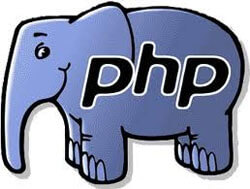Type Conversion with JavaScript Arrays
JavaScript's loose nature allows developers to employ amazing tricks to do just about anything you'd like. I've detailed how you can filter falsy values in arrays using a filter(Boolean) trick, but reader David Hibshman shared another trick for typecasting array values the same way.
To typecast an array of elements, you can use map and the desired return type:
["1", "9", "-9", "0.003", "yes"].map(Number);
// [1, 9, -9, 0.003, NaN]
I love this trick but you could argue the code itself could be considered confusing, so wrapping it a helper function would be helpful:
function arrToNumber(arr) {
return arr.map(Number).filter(Boolean);
}
Validation could and should probably be more rigorous but basic validation through typecasting might help you!
![Introducing MooTools Templated]()
One major problem with creating UI components with the MooTools JavaScript framework is that there isn't a great way of allowing customization of template and ease of node creation. As of today, there are two ways of creating:
new Element Madness
The first way to create UI-driven...
![9 Mind-Blowing Canvas Demos]()
The <canvas> element has been a revelation for the visual experts among our ranks. Canvas provides the means for incredible and efficient animations with the added bonus of no Flash; these developers can flash their awesome JavaScript skills instead. Here are nine unbelievable canvas demos that...
![Image Data URIs with PHP]()
If you troll page markup like me, you've no doubt seen the use of data URI's within image src attributes. Instead of providing a traditional address to the image, the image file data is base64-encoded and stuffed within the src attribute. Doing so saves...
![Morphing Elements Using MooTools and CSS]()
Morphing an element between CSS classes is another great trick the MooTools JavaScript library enables you to do. Morphing isn't the most practical use of MooTools, but it's still a trick at your disposal.
Step 1: The XHTML
The block of content that will change is...





The
.filter(Boolean)part also sees the zeros as booleans and removes those numbers.very useful!